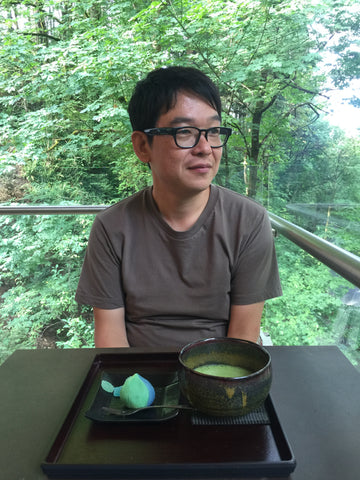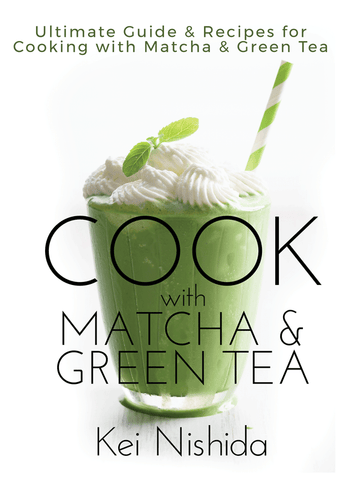How To Tell If Japanese Green Tea Is Good Quality Or Not

Delicious green tea easily reveals its quality. But its not always easy to pick out the factors that make a particular green tea great. For all the green teas you drink, it's essential to have consistent factors to use for assessing green tea quality. Ranging from look to smell and taste, learning how to evaluate green tea quality will help you enjoy your tea even more.
Check How The Tea Looks
The first clear point of distinction is in the appearance of the dry leaf. The general look of the leaf is a quality marker useful to assess quality. However, the way a tea leaf looks can be very tricky. Many people are fooled by deceptively packaged green tea that has been groomed to look beautiful.
There are many versions of green tea on the market that look stunningly beautiful. These beautiful, twisted green tea buds look incredible, but they might not make the green tea a quality grade. And then the converse can also be true. You might get some real ugly teas that taste superb. For instance, the color of gyokuro green tea would look a lot greener than other type of sencha tea. This is because the process gyokuro tea goes through for covering makes the tea look much greener than sencha tea. Therefore, “greener and the brighter the color, the better” is a false statement when it comes to quality of the tea.
The appearance of the dry leaf will be beautiful to behold. But it might just be that the photo of the tea you're looking at was taken at exactly the right angle. If people know how to fake it, they can make some high-quality looking tea even if it's not high quality. The look of a green tea is a quality marker, but it's not a very reliable one.
You can also check for the consistency of the green tea's appearance. This would involve looking for consistent shapes, consistent sizes and consistency of leaf sizes. Are the tea leaves whole, or are they broken up? Some more things to note on the appearance of the green tea leaf include the following:
• Check for consistency in the shape of the tea.
That doesn't necessarily mean that it has to always be the same. For example, it doesn't always have to be buds. Green teas can come in many forms of leaves, but you still want consistency within whatever variation you choose.
• You'll also you want to choose a green tea that shows consistent color.
Some teas will be lighter or darker in color depending on the variety. Whatever the shade, you want the color to be within the same range throughout. But if the tea has varied hues, then those color variations should be consistent throughout the sample.
• You can also look at the texture of the leaf.
This will tell you how it was processed and how well the ball of tea was rolled.

Smell Your Tea
The next step in assessing green tea quality is to smell the green tea leaf. But before you do so, keep the next caveat in mind. Many people make the mistake of only smelling the dry leaf. You can get some whiff of the tea's nature, but it's not going to tell you the entire story. The personality of the tea reveals itself the most when the tea leaf is warm and wet.
One big advantage of brewing and rinsing your green teas is that you can smell those wet leaves. This is the best way to really appreciate the aroma. If it's a good one, you'll know it from those wet leaves before you even start brewing. Knowledgable tea drinkers always make their assessments on the aroma of the leaves from the wet leaves and not the dry leaves. Wet leaves are the best way of getting a good sense of the scent. Once you know the scent, you'll have a better idea on the quality of the tea.
There are green tea merchants that take advantage of customers' naivety. It's one of the tricks that's used by a lot of tea sellers. Fragranced tea is so popular because it takes a low-quality tea and adds fragrance. The tea then has more of a wow factor. Always make sure to wait until the leaves are wet to smell the tea.
The Proper Way To Smell Your Tea
- Give your green tea a quick rinse.
• Between pouring out the rinse and steeping the tea, you should have ample opportunities to smell the tea.
• Make a note of what you smell. What fruits does it remind you of? Is it creamy or rich? Does what you smell (for example, notes of almonds or cherries) smell like it's been cooked?
You will be able to tell a high-quality tea from its smell. Check for depth and complexity to the aroma. You should notice a balance of bright and deep aromas. You don't want one that's all light or dark. Also, make a note of how long-lasting the aroma is. Once these leaves have cooled, do they still give off a fragrance? Check on the smell again after you've infused them multiple times. Does it hold on to its aroma through the infusions? The more it does, the more likely it is to be a higher quality tea.

Check On What They Brewed Green Tea Tastes Like
The most important thing is that your green tea tastes good. When you notice the taste of the green tea and join that with the aroma, you have a great idea on the tea's quality.
• Smell for the aroma while you taste your green tea drink.
• Agitate your tea in your mouth and breathe out through the nose.
• While the tea is in your mouth, swallow.
• Allow the green tea to settle in your mouth and throat.
• Notice the taste as you breathe out through your nose
There are so many tastes to encounter when sipping different varieties of green tea. All teas have different personalities. Everybody has flavors and tastes that they like. The flavors and tastes that your dining companion likes might be different. What green tea flavors appeal to one particular individual is a very personal thing.
You also want to be drawn in by the green tea you are drinking. You do not want something lightweight or boring. A quality marker of good tasting green tea would be very clear and balanced flavor profile. Just like with aroma, you want something that is not just a one-note experience. Bright notes should also occasionally give way to deeper aromas. You want that balance of bright, light notes along with those deeper notes as well.
And finally, the taste and aroma need to be personally enjoyable for you. Everyone is different. Everyone has different flavor memories and things that they like and dislike. The green tea flavor needs to be redolent of something that you already enjoy.

Tea Preparation Adds New Dimensions To Judging Green Tea
Let's say that you sample a variety of green teas to determine which of them has the best taste, body and aroma. The teas that you ultimately purchase might actually end up tasting different once you've brought them home. Since all of us have our unique ways of preparing tea, these various preparation techniques color how we taste our green tea.
• Do you add milk to your tea? If so, you should add the usual amount to judge how well you like the green tea after it's been prepared the way you like. Now you'll be able to compare the taste of the green tea with and without milk. (See my other article – 10 Ways to Enjoy Matcha with Milk)
• Add cold water or ice if you prefer to drink your green tea cold. (See my other article – the best equipment for cold-brewing Japanese green tea)
• Do you infuse your teas? If so, test out how well your ingredients pair with your green tea selection. Fruits and herbs are two favorite types of flavor infusers.
• Do you add any sweeteners to your tea before drinking? How does the addition of xylitol, honey or other sweetener blend with your green tea?
Adding these various additives to your green tea will create a completely different flavor profile. Some of the flavors and aromas might be challenging. But don't shy away from teas that, when prepared, have a challenging flavor profile. Being challenged or being put on the spot may feel uncomfortable at first, but it could lead to a more satisfying experience down the line. You might not like a certain style of green tea that has a strange taste when milk or sweeteners are added. Often times if you persist and give the green tea a few more chances, that tea might turn out in the end to have much more longevity. It could be an initially challenging tea that you might love much more than the simpler tastes you are used to.
Check The Green Tea Mouth Feel And Body
The mouthfeel and body of your tea is another good quality marker. You'll need to really focus here on the body of the green tea to make your assessment. It is easy to ignore this quality marker. Body is something that many people skip over, some perhaps because they don't even know what to look for to assess the mouthfeel of a proper green tea.
Everyone focuses on taste and flavor, but mouthfeel is one of the clearest quality markers of green tea. The body of the tea, as it feels in your mouth, speaks of the quality of the leaf itself. The mouthfeel announces the quality of the soil that the tea was grown in.
It's true that the mouthfeel has many factors that can influence it. The mouthfeel of a tea is affected by the processing, but it's a true marker of a tea's quality. It's hard to fake mouth feel. Some markers of mouthfeel include the following:
• What is the texture of the green tea like? Is it light, or is it thick and syrupy?
• How heavy does the green tea feel in your mouth? It needs to be thicker than water.
• How dry is the finish? The dryness, or astringency, can be a turnoff for some people. The dryness of a green tea is an important factor in its enjoyment. You don't want too much dryness, but some astringency is pleasant. The dryness helps give the tea some physicality.
• How does the feel change as it goes down your throat? Does it coat the throat? Can you feel the physicality of it there and in your mouth?
Learning how to assess green tea is one of the joys of appreciating tea. Anybody who's getting into brewing will tell you this. Suddenly there's this whole new aspect to the appreciation of the tea when you can really sniff those teas. This is especially true when you have good green teas.
Try Sample Tea First
Many tea companies let you try sample tea first before you purchase the whole bag. This is a good way to try out different type of tea at once to see which one you like without purchasing the entire bag.
Attend Tea Festival
There are many tea festivals around the nation. Tea festivals hosts many tea companies and they let you sample tea. This is a good opportunity to try out different tea and see what you enjoy the most. Here are some tea festivals we attend so you can see pictures of what they look like:
- Choco Tea Expo (Mumbai every August)
- Northwest Tea Festival (Seattle every November)
- Portland Tea Festival (Portland every August)
- World Tea Expo (Las Vegas or Colorado every June – this one is more for wholesale customers)
Enjoy the Journey of Hunting for the Best Tea
After all what you like is the best tea!
Enjoy hunting and hope you get to find the perfect one you enjoy every steeping every day.
Related Articles You May Be Interested In
Get Free Download
If you have ever thought that Green Tea is an ìacquired tasteî or that it is ìtoo bitterî to enjoy, weíre here to change your mind! We want everyone to experience the health benefits of Green Tea and show you that this can be an amazing, refreshing, and delicious drink when made correctly. With just a few tips on how to brew this powerful leaf, we can change your mind about the taste and enjoyment of drinking Green Tea.
Donít miss out on the health benefits of tea!
- Improve health
- Increase brain function
- Regulate weight
- Lower your risk of cancers
- Reduce risk of heart disease
- Lowers risk of diabetes
We know that you will love this tips to brewing tea and getting the most flavor and elegance out of every cup. Sign up for our newsletter and get this great informative manual on brewing green tea. You will learn what it is that makes it one of the most popular beverages in the world.
The E-Book also includes the chapter of Kei Nishida's book, "Art of Brewing Japanese Green Tea" where he teaches you how to brew hot and cold Japanese Green Tea.
Also in Japanese Green Tea Lovers in India

TYPES OF TEA: MATCHA VS SENCHA GREEN TEA: WHAT ARE THE DIFFERENCES?
When it comes to different types of tea, matcha and sencha green tea are two many people have questions about! Get answers in this post.

Is Green Tea Good Against Depression?

What is the best way to store your matcha & Japanese green tea?
5 Essential Storage Rules for Matcha and Japanese Green Tea
Read on to learn how to store matcha the proper way to ensure that you get the most out of this ancient elixir.

































